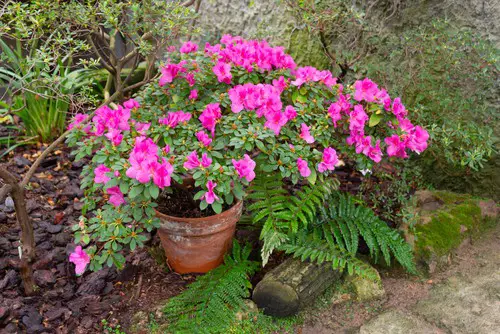Azaleas are lovely flowering plants that are typically grown by gardeners who work outside. Are you an azalea plant owner looking to find the best Azalea companion plants for your household garden?
The best companion plants for Azaleas are hydrangeas, ferns, daffodils, and mountain laurels. These plants match the watering, sun, and soil requirements of azaleas. Plus, they look nice planted next to these colorful plants.
Continue reading to explore everything about the best azalea companion plants, including their sizes, flowering, and other key features.
What are azalea plants?
Azalea plants are flowering shrubs that bloom during spring and summer. The fragrant, funnel-shaped flowers come in various colors, like purple and pink.
The roughly 3 to 20-foot shrub thrives in partial shade with sporadic sunlight. Azaleas prefer acidic soil with good drainage and an acceptable pH between 4.5 to 6.0 pH.
Also read:
What are the best Azalea companion plants?
The best companion plants for azaleas are versatile plants that thrive in acidic soil with good drainage. Plants like hydrangeas, witch hazel, and blueberries grow in acidic soils with good drainage.
Furthermore, plants that grow in full or partial sunlight do well with azaleas. Azaleas typically attract many colorful companion plants.
The 10 best Azalea companion plants include the following:
- Hydrangea
- Mountain Laurel
- Plantain lily (Hosta)
- Ferns
- Daffodils
- Rhododendron
- Witchhazel
- Columbines
- Holly
- Blueberry
1. Hydrangea

Hydrangeas are a shrub that blooms in early spring and lasts until autumn. The hydrangea is the best companion plant for your azalea plant because it requires relatively the same care routine, including soil and sunlight care.
Hydrangeas are versatile plants that thrive year-round, even when out of bloom. Depending on the soil composition, they come in various colors and shades, making them a great complement to the colorful azalea.
Mature Size: Roughly 2 to 3 feet tall and wide but may vary based on the variety.
Flowering: Bloom circular bulbs in varying colors.
Key Features: There are six main types of hydrangeas: French or bigleaf, oakleaf, climbing, panicle, smooth, and mountain.
2. Mountain laurel
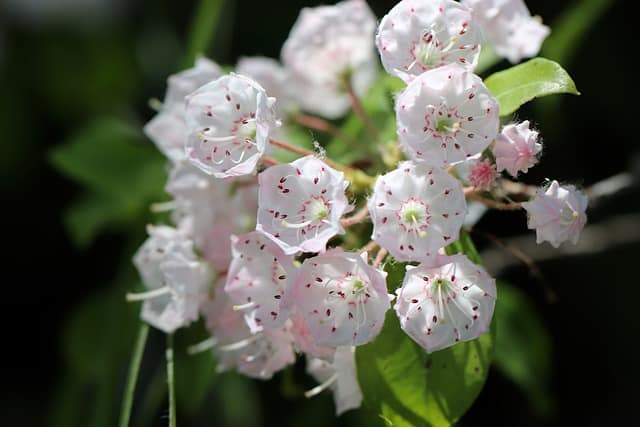
The mountain laurel is a springtime shrub that is a distant relative of the azalea plant. Mountain laurels prefer shaded areas with partial sunlight and acidic, well-draining soil. These growing conditions are the same as azaleas, making them the perfect azalea companion plants.
Mountain laurel looks great with the colorful azalea, but you should always consider the toxicity level of this plant before trying to ingest it.
Mature Size: Between 5 and 15 feet tall.
Flowering: Clusters of pink, purple, and white pentagon-shaped blossoms.
Key Features: Mountain laurel is toxic to people and pets.
3. Hosta

Hostas are some of the most common azalea companion plants. The hosta is a perennial that requires acidic, well-drained soil. Hosta plants have large leaves and colorful flower blooms. The colorful white, pink, and purple flowers bloom in summer.
Mature Size: 6-48 inches tall and 10-60 inches wide.
Flowering: Hanging, funnel-shaped mounds that look like small lilies. These are long and come in either purple, pink, or white.
Key Features: The flowers make up most of the height of the hosta plant.
4. Ferns

Ferns are the perfect addition to any azalea garden. They are an easy plant to care for, making them the perfect companion plant for the azalea. You care for the plants using the same watering, sun, and soil conditions. Plus, the plant adds just enough color and is very easy to care for.
Mature Size: The average size of your fern varies based on the species. Ferns are typically between 3 and 6 feet tall, the width varies.
Flowering: The leaves of a fern may vary in appearance.
Key Features: There are several kinds of ferns that vary in appearance, shape, and size.
5. Daffodils
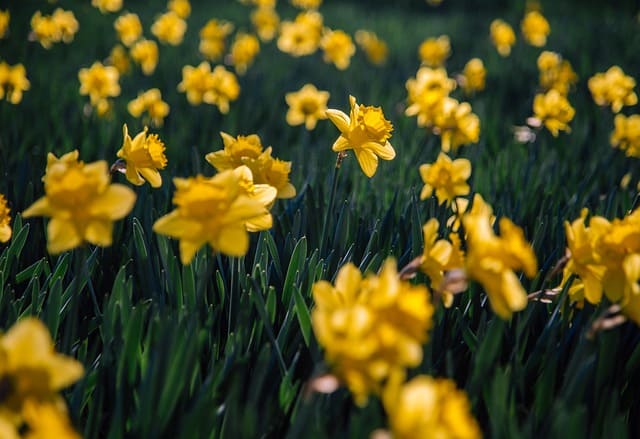
Daffodils are a great azalea companion plant. They do best in full sun, which makes them good for the areas around your azaleas.
There are many types of daffodils, and they can survive in many climates, making them wonderful azalea companion plants. Daffodils come in many colors, including white, yellow, orange, and pink. They bloom in spring.
The daffodil does not grow very large so you can plant it in the same container as your azaleas without needing to replant it once it reaches its full maturity.
Mature Size: On average, daffodils grow 6 to 30 inches tall and 6 to 12 inches wide.
Flowering: The bell-shaped flowers bloom orange, yellow, pink, and red. They have a darker central cup surrounded by a ring of thicker, light petals.
Key Features: Daffodils require well-drained soil, which is also important for the azalea. They are toxic to both animals and humans.
6. Rhododendron

Rhododendrons are very similar to azaleas, which makes them the perfect companion plant for azaleas. The rhododendron has a colorful bloom during the same time of year as the azalea.
It grows best in acidic soil under partial sunlight. The rhododendron is the closest species to the azalea. It requires nearly identical growing conditions.
Mature Size: A mature rhododendron grows roughly 3 to 8 feet tall and 3 to 8 feet wide.
Flowering: The rhododendron blooms every mid-summer to autumn. The flowers of the rhododendron vary in color from dark purple to light pink.
Key Features: Rhododendrons are toxic to people and house pets, making them dangerous to keep for some beginner gardeners.
7. Witch hazel

Witch hazel is a good companion plant for azaleas because they both receive most of the same plant care techniques. Witch hazel is tolerant to acidic soil, something that azaleas rely on.
Witch hazel plants are good companions to azaleas because the two plants can both thrive under direct sunlight. However, the azalea will not fully bloom in the direct sunlight like it would under shaded areas.
Mature Size: Between 10 to 20 feet tall and up to 15 feet wide.
Flowering: The citrus-scented petals are red or yellow and look like crumbled leaves.
Key Features: There are four main types of witch hazel: American, Ozark, Japanese, and Chinese.
8. Columbines
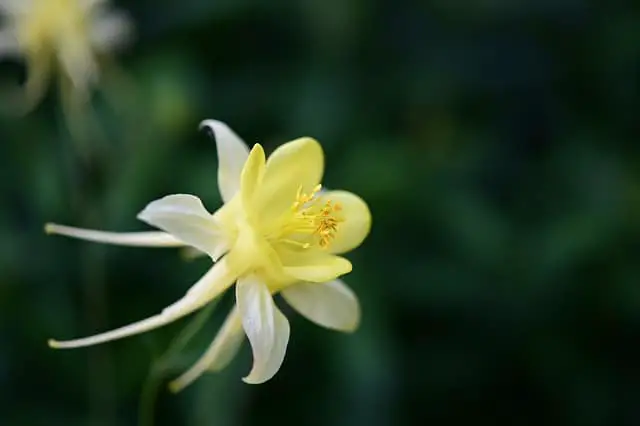
Columbines are colorful plants that pair nicely with the azalea because of their appearance and plant care needs.
The columbine is a perennial with over seventy species, making it a highly versatile companion for the azalea. They prefer slightly acidic soil like the azalea and grow best in full or partial sunlight, similar to the azalea.
Mature Size: 1 to 3 feet tall and 1 to 2 feet wide.
Flowering: A downward bell-shaped bulb that varies in color. It blooms mid-spring through early summer.
Key Features: The columbine blooms in various colors at once, including white, yellow, pink, blue, purple, and more. The color varies based on the region of the plant and soil type.
9. Holly
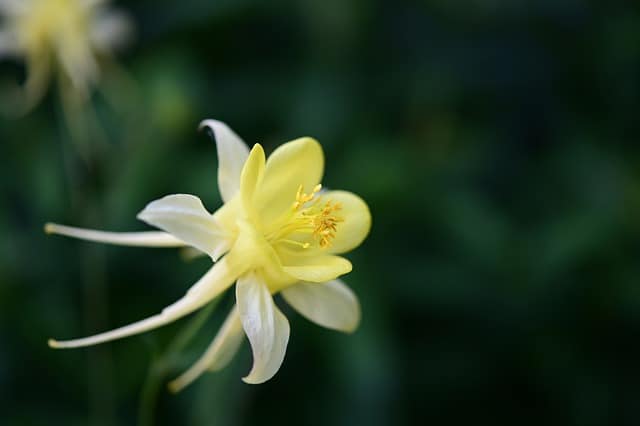
Holly is a shrub that grows in partial shade, much like the azalea shrub. The thick foliage thrives in well-drained soil. They pair nicely with azalea plants because of the same conditions they require to grow and the hint of color these plants add to your garden during the springtime.
Mature Size: Vary significantly between 5 to 80 feet tall and 10 to 20 feet wide.
Flowering: Creamy white, cup-shaped flowers bloom every spring to early summer.
Key Features: Female holly plants produce red berries. Male plants are pollinators.
10. Blueberry
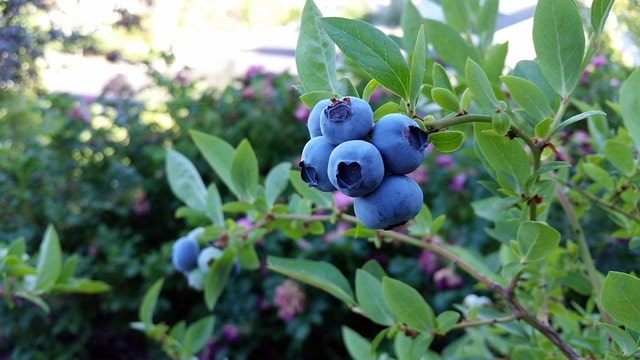
Blueberry bushes are great companions to the azalea because they require the same growing conditions. Blueberries thrive in acidic soil, growing best in full sun. The soil should have good drainage. A blueberry bush complements the bright color of your azaleas by giving it slight contrast.
Mature Size: Grow up to 8 feet tall and between 2 and 10 feet wide, depending on the bluberry plant species.
Flowering: Bell-shaped flowers bloom in late spring. Berries bloom in spring after three years.
Key Features: Both blueberry plants and azaleas thrive in acidic soil, making them compatible plants. Unlike many other crops, blueberries do not attract pests.
Summary
The best azalea companion plants are generally plants that thrive in well-drained, acidic soil. Plants like hydrangeas, ferns, mountain laurels, and bleeding hearts, among many others, are great companions for the azalea.
Any plant that thrives under shaded areas is good for the azalea, and so are plants that do well in direct sunlight since the azalea plant is known for growing toward the light.
Frequently Asked Questions
What is the best azalea companion plant?
The best azalea companion plant is the hydrangea. They both require the same plant care techniques, making it easy to care for the two plants. Planting these shrubs together results in easy plant care techniques.

Hey, I’m Lisa and I’ve been an avid gardener for over 30 years. I love writing, talking and living in the garden! Feel free to connect with me on my socials below

